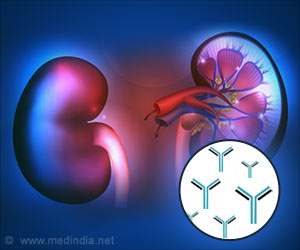Researchers find hepatitis E virus in pig sperm, suggesting potential sexual transmission and link to male infertility.

Infectious hepatitis E virus is associated with the mature sperm head
Go to source).
Potential Links to Male Infertility and Sexual Transmission
Researchers at The Ohio State University investigated HEV’s infectivity in pigs, whose reproductive anatomy is similar to that of humans. This research was prompted by HEV’s association with fatal pregnancy complications and reports of male infertility in developing regions.‘Did You Know?
HEV is found on 19% of sperm cells in pigs, raising questions about sexual transmission and impacts on fertility. #hepatitis #medindia’





After inoculating pigs with HEV, the team found the virus circulated in blood and was shed in feces, meaning that the pigs were infected, but they had no clinical symptoms –asymptomatic cases are common in humans, as well. Results also showed HEV was present on the head of sperm cells, and that these same viral particles could infect human liver cells in culture and begin replicating.HEV is found on 19% of sperm cells in pigs, raising questions about sexual transmission and impacts on fertility. #hepatitis #medindia’
“Our study is the first one demonstrating this association of hepatitis E virus with the sperm cell,” said first author Kush Yadav, who completed the work as a PhD student in Ohio State’s Center for Food Animal Health. “Our future studies will be directed toward understanding the association between hepatitis E virus and the sperm head more mechanistically, and using animal models to see whether sexual transmission of the virus is happening – because in the human setting, we still don’t know.”
The study was published recently in the journal PLOS Pathogens.
HEV’s Protection in Testicles and Potential Health Impacts
Sexually transmitted organisms are those able to find safe haven in testicles, where they are protected by a blood-testis barrier that immune cells cannot cross. In addition to pregnancy and reproductive disorders linked to HEV, there are signs it can also lead to pancreatic and neurological disorders in humans. Historically, clinical infections – even in pregnant people – have been assumed to be traced to fecal-oral transmission.Yadav works in the lab of senior study author Scott Kenney, an associate professor of veterinary preventive medicine at Ohio State based in the Center for Food Animal Health at the College of Food, Agricultural, and Environmental Sciences’ Wooster campus.
Kenney studies HEV and other viruses in animals – especially those capable of infecting humans. This work is an offshoot of a larger study in pigs examining HEV strains that are resistant to antivirals.
Using fluorescence microscopy in this new study to examine pig semen 84 days after inoculation with HEV, Yadav detected viral particles associated with at least 19% of sperm cells collected from the infected swine.
“We can’t say they’re sitting on the outside or inside the sperm cells,” he said. “We don’t know if the hepatitis E virus can actually complete a replication cycle in the sperm head, so we’re thinking sperm is more of a carrier than a susceptible cell.”
The study also showed that HEV’s presence correlated with damaged sperm – potentially altering their structure and decreasing their ability to move through seminal fluid. That said, the researchers can’t yet say that these changes directly translate into fertility problems, though the link between HEV infection and human infertility suggests this could be the case.
“In between 20 and 50% of documented male infertility cases, they don’t really know what’s causing it,” Kenney said. “So we’re pushing for more screening for hepatitis E virus as a potential cause for those cases.”
The current findings also form the basis for screening the sexual partners of pregnant women who test positive for HEV, Yadav said, even though scientists haven’t yet established sexual transmission is possible.
There are implications for the swine industry, as well. Most commercial pig litters are produced by artificial insemination, with donor sperm distributed broadly from large breeder facilities.
“That could be part of the problem with HEV being endemic across the country, and raises a question about whether it causes a reduction in the reproductivity of the pigs,” Kenney said. “Because HEV doesn’t cause enough damage to pigs to limit production profitability, I don’t see the swine industry broadly vaccinating for hepatitis E virus, but if we could implement some kind of cost-effective screening or vaccination at these upstream boar facilities, maybe we could reduce introduction of the virus into new herds.”
Reference:
- Infectious hepatitis E virus is associated with the mature sperm head - (https://journals.plos.org/plospathogens/article?id=10.1371/journal.ppat.1012240)
Source-Eurekalert














